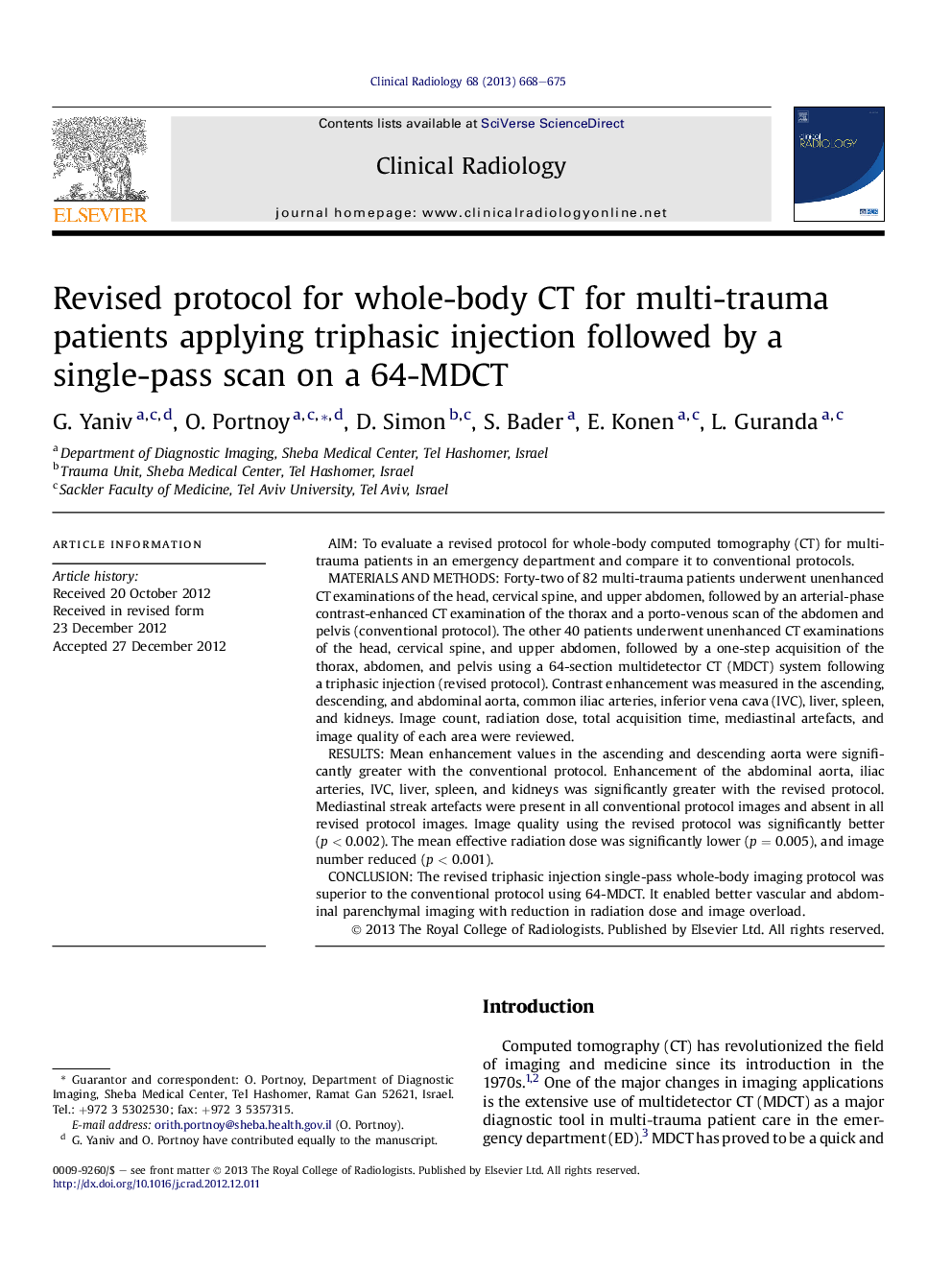| Article ID | Journal | Published Year | Pages | File Type |
|---|---|---|---|---|
| 3982478 | Clinical Radiology | 2013 | 8 Pages |
AimTo evaluate a revised protocol for whole-body computed tomography (CT) for multi-trauma patients in an emergency department and compare it to conventional protocols.Materials and methodsForty-two of 82 multi-trauma patients underwent unenhanced CT examinations of the head, cervical spine, and upper abdomen, followed by an arterial-phase contrast-enhanced CT examination of the thorax and a porto-venous scan of the abdomen and pelvis (conventional protocol). The other 40 patients underwent unenhanced CT examinations of the head, cervical spine, and upper abdomen, followed by a one-step acquisition of the thorax, abdomen, and pelvis using a 64-section multidetector CT (MDCT) system following a triphasic injection (revised protocol). Contrast enhancement was measured in the ascending, descending, and abdominal aorta, common iliac arteries, inferior vena cava (IVC), liver, spleen, and kidneys. Image count, radiation dose, total acquisition time, mediastinal artefacts, and image quality of each area were reviewed.ResultsMean enhancement values in the ascending and descending aorta were significantly greater with the conventional protocol. Enhancement of the abdominal aorta, iliac arteries, IVC, liver, spleen, and kidneys was significantly greater with the revised protocol. Mediastinal streak artefacts were present in all conventional protocol images and absent in all revised protocol images. Image quality using the revised protocol was significantly better (p < 0.002). The mean effective radiation dose was significantly lower (p = 0.005), and image number reduced (p < 0.001).ConclusionThe revised triphasic injection single-pass whole-body imaging protocol was superior to the conventional protocol using 64-MDCT. It enabled better vascular and abdominal parenchymal imaging with reduction in radiation dose and image overload.
